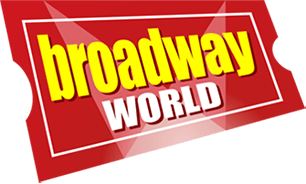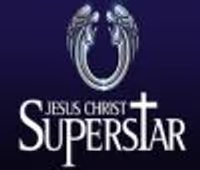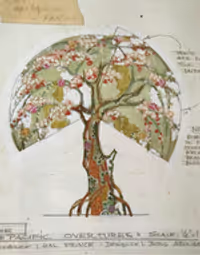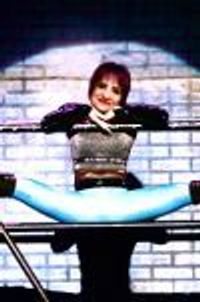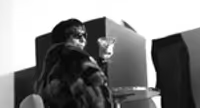West Side Story - Sequence of Events in Film vs. Stage Version
#25West Side Story - Sequence of Events in Film vs. Stage Version
Posted: 5/20/13 at 2:15pm
Many non-union dinner theatres have put the intermission of the stage show after the Quintet. It has something to do with having two dead bodies on stage who will then show up to serve you drinks. For me, it works to keep the tension up if the second act starts with the rumble.
Updated On: 5/20/13 at 02:15 PM
#26West Side Story - Sequence of Events in Film vs. Stage Version
Posted: 5/20/13 at 3:32pm
^ For those who need it explicated, how the show would run in my hypothetical revival:
ACT ONE
Prologue: The Months Before
PROLOGUE . . . . . . . . . Danced by Jets and Sharks
5:00 P.M.: The Street
JET SONG . . . . . . . . . Riff and Jets
5:30 P.M.: A Back Yard
SOMETHING'S COMING . . . . . . . . . Tony
6:00 P.M.: A Bridal Shop
10:00 P.M.: The Gym
THE DANCE AT THE GYM . . . . . . . . . Danced by Company
MARIA . . . . . . . . . Tony
11:00 P.M.: A Back Alley
AMERICA . . . . . . . . . Anita, Bernardo, Sharks and Girls
TONIGHT . . . . . . . . . Tony and Maria
Midnight: The Drugstore
GEE, OFFICER KRUPKE . . . . . . . . . Riff and Jets
The Next Day, 5:30 P.M.: The Bridal Shop
I FEEL PRETTY . . . . . . . . . Maria, Rosalita, Teresita, Francisca
ONE HAND, ONE HEART . . . . . . . . . Tony and Maria
6:00 to 9:00 P.M.: The Neighborhood
TONIGHT (Quintet and Chorus) . . . . . . . . . Company
ACT TWO
9:00 P.M.: Under the Highway
THE RUMBLE . . . . . . . . . Riff, Bernardo, Jets and Sharks
9:15 P.M.: A Bedroom
SOMEWHERE . . . . . . . . . Danced by Company; Sung by (whoever)
10:00 P.M.: Another Alley
COOL . . . . . . . . . Diesel and Jets
11:30 P.M.: The Bedroom
A BOY LIKE THAT . . . . . . . . . Anita and Maria
I HAVE A LOVE . . . . . . . . . Anita and Maria
11:40 P.M.: The Drugstore
TAUNTING . . . . . . . . . Anita and Jets
11:50 P.M.: The Cellar
Midnight: The Street
FINALE . . . . . . . . . Company
Broadway Legend
joined: 5/1/05
Blocked: After Eight, suestorm, david_fick, emlodik, lovebwy, Dave28282, joevitus, BorisTomashevsky, Seb28
#27West Side Story - Sequence of Events in Film vs. Stage Version
Posted: 5/20/13 at 4:09pm
Personally, I think the placement in both the movie and stage version work fine; I slightly prefer the stage version because I like the unexpected, un-solemn choice of putting a comic number in a dark and heavy spot in the story.
Unlike some folks, I don't see it as a black & white, clear-cut case of "one choice is right and one is wrong."
#28West Side Story - Sequence of Events in Film vs. Stage Version
Posted: 5/20/13 at 5:11pm
g.d.e.l.g.i., your rundown confirms for me what I'd dread about your version of the show: Act I is an endless parade of happy; Act II is an endless parade of sad.
Moving "I Feel Pretty" to the middle of Act I repeats your desire for uncomplicated cheerfulness by taking away all the tension of Maria singing "Pretty" while the audience knows her brother is dead, as is the case in the original.
I say give the audience more credit as thinking adults and let them process two competing emotions at once-- that's what makes the original so smart.
#29West Side Story - Sequence of Events in Film vs. Stage Version
Posted: 5/20/13 at 5:16pm
And I say give the modern audience more credit than audiences in 1957 who needed comic or lighthearted numbers to ease the tension. We're used to operatics in our musicals now. If you can't stand a parade of sad, clearly you've never sat through most imported musicals since the 1970s. That "parade of sad" is going to leave the audience thinking about the morals of the show long after it's over, which is not to say that they didn't before, only that this structure will better reinforce the point of the show.
Broadway Legend
joined: 5/1/05
Blocked: After Eight, suestorm, david_fick, emlodik, lovebwy, Dave28282, joevitus, BorisTomashevsky, Seb28
#30West Side Story - Sequence of Events in Film vs. Stage Version
Posted: 5/20/13 at 5:30pm
^ You're inviting us into a really interesting discussion here, thinking about shows that play their emotions out on their sleeves without ambiguity or irony, where in your words, a "'parade of sad' is going to leave the audience thinking about the morals of the show long after it's over". I'd put Les Miz, Phantom and Miss Saigon in that camp.
I prefer my morals served to me with a side of complexity, with competing layers and contradictions intact. Kander and Ebb's "Kiss of the Spiderwoman" or Scottsboro Boys", or virtually anything out of Sondheim's catalogue would qualify. Obviously I want my dark songs tinged with joy, and my joyous songs tinged with tragedy -- hence my preference that "Cool", "I Feel Pretty" and "Krupke" remain where Laurents, Sondheim and Bernstein first stuck 'em.
Updated On: 5/20/13 at 05:30 PM
#31West Side Story - Sequence of Events in Film vs. Stage Version
Posted: 5/20/13 at 6:38pm
Personally, I think the placement in both the movie and stage version work fine; I slightly prefer the stage version because I like the unexpected, un-solemn choice of putting a comic number in a dark and heavy spot in the story.
I agree with you. This might be an off-the-wall comparison, but the late appearance of "Gee, Officer Krupke" has much the same impression on me that "Good Morning Starshine" does in Hair. Singing an upbeat or comic song in the midst of pain and uncertainty makes the dark seem even darker, and makes the song itself seem more poignant, too. (I realize as I write this that I have no hope of conveying the feeling that I get from these songs as performed on stage, but I don't feel it when "Gee, Officer Krupke" is sung earlier.)
#32West Side Story - Sequence of Events in Film vs. Stage Version
Posted: 5/20/13 at 6:40pmI've seen them both, and the film placement works much better dramatically.
blocked: logan2, Diamonds3, Hamilton22
#33West Side Story - Sequence of Events in Film vs. Stage Version
Posted: 5/20/13 at 6:42pmThis is one of the biggest "no right answer" questions in musical theatre, up there with the variant versions of "Cabaret."
#34West Side Story - Sequence of Events in Film vs. Stage Version
Posted: 5/23/13 at 9:22pm
I prefer film's structure, but I must admit that was my first exposure with the piece.
As to film adaptations which were superior to the stage, I'd throw Dreamgirls in there. Talking dramatic structure, not OBC vs film cast.
Even with its flaws, the Godspell film's use of New York was wonderful.
#35West Side Story - Sequence of Events in Film vs. Stage Version
Posted: 5/23/13 at 9:46pmWas the Tonight Quintet originally intended to be the end of the act? Because it just builds so fantastically as an Act 1 finale. I personally think that it would be the best place to end the act, because it leaves all of the story lines up in the air, so they can be resolved in the second act. It just seems so natural to me.
#36West Side Story - Sequence of Events in Film vs. Stage Version
Posted: 5/23/13 at 10:04pm
^ But the deaths of Riff and Bernardo are the whole reason to end the act. It's the big "cliffhanger." Sirens are heard, and Tony leaves the scene, as the two lifeless bodies lay there while the curtain falls.
You wouldn't start act 2 with such a climactic moment like that.
This is one of the biggest "no right answer" questions in musical theatre, up there with the variant versions of "Cabaret."
THIS! I feel like it's discussed here several times a year.
Updated On: 5/23/13 at 10:04 PM
Gothampc
Broadway Legend Joined: 5/20/03
#37West Side Story - Sequence of Events in Film vs. Stage Version
Posted: 5/23/13 at 10:12pmEnding Act 1 with the Rumble means that you have two actors sitting around in their dressing rooms for an hour.
#38West Side Story - Sequence of Events in Film vs. Stage Version
Posted: 5/23/13 at 10:16pm
This is one of the biggest "no right answer" questions in musical theatre, up there with the variant versions of "Cabaret."
And where to put the intermission in Follies, or if you have to put an intermission in Follies at all.
#39West Side Story - Sequence of Events in Film vs. Stage Version
Posted: 5/23/13 at 10:21pm
^ But I feel like most people agree that stopping the "action"/flow in FOLLIES is detrimental to the piece.
The COOL/KRUPKEE placement seems to cause more indecisiveness.
#40West Side Story - Sequence of Events in Film vs. Stage Version
Posted: 5/24/13 at 8:44am
But the deaths of Riff and Bernardo are the whole reason to end the act. It's the big "cliffhanger." Sirens are heard, and Tony leaves the scene, as the two lifeless bodies lay there while the curtain falls.
You wouldn't start act 2 with such a climactic moment like that.
As I've just made clear in the thread, I absolutely would start Act 2 with it. The big "cliffhanger," to me, is: Will Tony stop the rumble? Will the rumble be a real rumble, or will these street kids who've maybe gotten in a few scuffles and aren't prepared for murder chicken out?* Will the cops find them before anything gets serious? (And any number of other questions.) The quintet is a fantastic build to a first act closer.
* That's one thing Arthur got wrong in every interview about the 2009 revival... these boys aren't hardened gang members, and no that's not a joke about Jerry's choreography. The book strongly indicates they were angsty, immature kids looking to belong, to have some sense of control of their lives. They weren't prepared for anybody to die that night. I don't think they were ever prepared to kill anyone. They are not "hardened, vicious killers," as I believe he characterized them. They're not innocent by any means, but they're not on the fast track to "fifteen to life" either. My personal theory is that Arthur, in his advancing years, was given a copy of Irving Shulman's novelization of the film, which considerably toughens up the characters, and decided to pretend it was his idea...
Broadway Legend
joined: 5/1/05
Blocked: After Eight, suestorm, david_fick, emlodik, lovebwy, Dave28282, joevitus, BorisTomashevsky, Seb28
AEA AGMA SM
Broadway Legend Joined: 8/13/09
#41West Side Story - Sequence of Events in Film vs. Stage Version
Posted: 5/24/13 at 6:52pm
"Ending Act 1 with the Rumble means that you have two actors sitting around in their dressing rooms for an hour."
Only if you are doing the most recent revival. In the proper version they have to come back down to get killed again for the nightmare section of the Somewhere Ballet.
#42West Side Story - Sequence of Events in Film vs. Stage Version
Posted: 6/26/22 at 6:27pm
Now that Steven Spielberg's film adaptation has been out since last December, I thought I'd give this thread a bump. Some of what's been discussed here were brought up during Next Best Picture's podcast review of it. Matt Neglia mentioned that while he very much adored Spielberg's iteration, he still had some problems. Among them were the placement of 'I Feel Pretty' as he felt it slowed down the momentum of the film. Plus, the story to him always felt like it was building up to the rumble, but it surprisingly doesn't happen at the very end.
https://www.nextbestpicture.com/west-side-story.html
Videos
